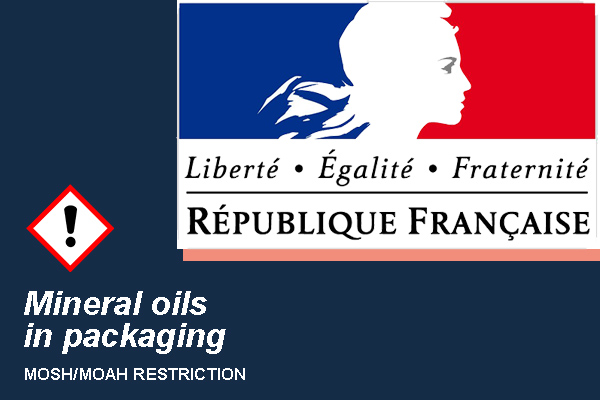Mineral oils in the food
Due to the ability of mineral oil to enter food during processing and throughout the supply chain, its contamination can now be found in a wide variety of foods. Potential sources of mineral oil include fuel, exhaust emissions, lubricants, surface treatment agents, ingredient oils, packaging materials, and more. As a result, food manufacturers, distributors, and analytical laboratories face significant challenges when attempting to identify the sources and points of contamination. The types of foods that may be affected by mineral oil contamination include rice, grains, chocolate products, spices, fats and oils, as well as foods that undergo further processing and packaging.
- What are MOSH, MOAH, PAH, POSH, PAO? Hazardous?
- Evaluation and acts from various countries
- Future development and regulations
MOSH, MOAH, PAH, POSH, PAO
Mineral oil generally contains two types: Mineral Oil Saturated Hydrocarbons (MOSH) and Mineral Oil Aromatic Hydrocarbons (MOAH), the latter of which may include polyaromatic hydrocarbons (PAHs), classified as Group 1 carcinogens. Studies have found that recycled paper containing newspaper ink, when in direct contact with food without any barrier material, is a major source of MOAH contamination in food.
The mineral oil fractions of concern are primarily complex mixtures of fossil-derived hydrocarbons (C10 to C50). Industrial-grade mineral oil consists of MOSH and up to 50% MOAH. MOSH, when ingested through food, tends to accumulate in the body, particularly in the lymph nodes and spleen, where the highest concentrations are found. MOSH exhibits low to moderate toxicity, and long-term consumption of food contaminated with MOSH could pose health risks. Generally, food-grade white oil (liquid paraffin) is primarily MOSH, whereas industrial-grade mineral oil contains high levels of MOSH and 15% to 35% MOAH.
Unlike PAHs, which are structurally related and carcinogenic, MOAH is a complex mixture of compounds with varying and unknown toxicities. Animal studies have shown that mixtures of low-viscosity mineral oils can accumulate in the body and cause damage to the liver, heart valves, and lymph nodes.
In addition to mineral oil fractions like MOSH and MOAH, substances such as POSH (Polyolefin Oligomeric Saturated Hydrocarbons) and PAO (Poly Alpha Olefins) are also gaining attention. POSH are oligomers that can migrate from plastic packaging (e.g., PE and PP). PAOs are synthetic isoparaffins used in synthetic lubricants and adhesives.
BRUGAROLAS has a series products including latest hydraulic oils, gear oils, greases do not contain MOSH/MOAH.
- G. BESLUX ATOX SM-152 (MOSH/MOAH free food grade grease)
- BESLUX GEARBIO-ATOX (Biodegradable gear oils)
- BESLUX HIDRO-BAT 32, 46 (Biodegradable hydraulic oils, non-toxic)
Evaluation and acts
In 2009, the German Federal Institute for Risk Assessment (BfR) issued a warning regarding the direct and extensive contact between dry food and recycled cardboard. As a short-term solution, it was recommended to switch to products made from virgin fibers or to use inner bags made from materials like aluminum or PET, which effectively prevent the migration of contaminants.
BfR provided the following indicative values for mineral oil in food:
– C10 – 16: 12 mg/kg (food)
– C17 – 20: 4 mg/kg (food)
In January 2017, the European Union issued a recommendation for monitoring mineral oil hydrocarbons.
According to the draft of Germany’s national mineral oil regulations, recycled materials can only be used for packaging if the migration level of MOAH (C16–C35) does not exceed 0.5 mg/kg.
Although Taiwan has stipulated that recycled paper cannot be used in food packaging, and soybean oil ink, rather than mineral oil ink, is primarily used in Taiwanese food packaging, current regulations also require that packaging directly in contact with food must not have ink leaching. If a violation is found and not corrected within the specified time, fines ranging from 300,000 to 3 million NTD will be imposed. The ink must be a food-grade coloring agent.
In 2019, the European organization Foodwatch reported the presence of mineral oil (MOSH and MOAH) in various brands of baby food. As a result, on December 5, 2019, the European directive “JRC EUR 29666” set requirements for the analysis methods of MOSH and MOAH in baby food. Mineral oil contaminants MOSH and MOAH should not be present in food.
**November 2022 Update – EU Releases Revised Guidelines on MOAH**
In May, the EU’s CosPAFF issued a statement setting LOQ (Limit of Quantification) thresholds for aromatic mineral oils (MOAH) in food. The guidelines categorize the limits into three types:
– **Dry foods** with low-fat content (fat/oil ≤ 4%): limit of 0.5 mg/kg.
– **Foods with moderate fat content** (fat/oil > 4%, ≤ 50%): limit of 1 mg/kg.
– **High-fat foods** (fat/oil > 50%): limit of 2 mg/kg.
**April 13, 2022 – France Issues Regulations on Mineral Oil Residue Testing in Packaging**
Starting from January 1, 2023:
– No specific regulations yet for MOSH (C16-C35) proportion testing.
– MOSH (1-7 aromatic rings) must be <1%.
Starting from January 1, 2025:
- MOSH (C16-C35) must be <0.1%.
- MOAH (1-7 aromatic rings) must be <0.1%.
- MOAH (3-7 aromatic rings) must be <1 ppm.
Reference:
https://www.efsa.europa.eu/en/topics/topic/mineral-oil-hydrocarbons
https://baike.baidu.com/item/%E7%9F%BF%E7%89%A9%E6%B2%B9
Send us the message with your information including company name, usage, needs, lubricant, email and TEL etc. Our technical engineer will contact you soon.




